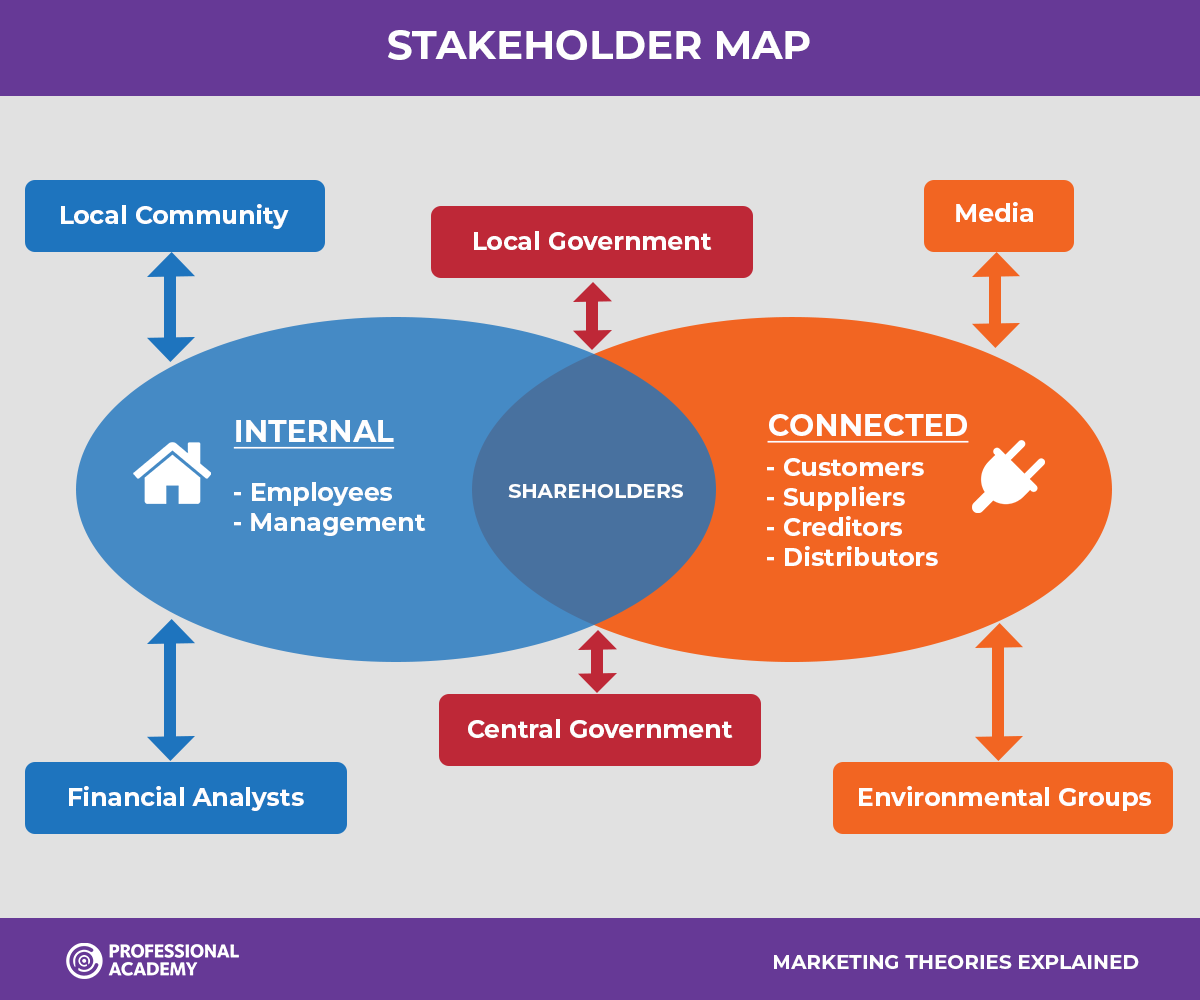

Visit our Marketing Theories Page to see more of our marketing buzzword busting blogs.
Welcome to this week's Marketing Theory post. This week we will look at how marketers use something called a stakeholder map or stakeholder mapping. Marketers use this technique to group all the stakeholders for their organisation into three groups, Internal, Connected and External.
To understand this model we first need to look at how a stakeholder is defined. In the official CIM course book – Stakeholder Marketing, stakeholders are defined as:
'Those persons and organisations that have an interest in the strategy of the organisation. Stakeholders normally include shareholders, customers, staff and the local community.
From this definition we can see that a stakeholder is a person, persons or an organisation that have an interest, effect and can be affected by what the organisation does'.
This highlights why organisations need to be able to identify their stakeholders and also judge the level of power they hold to affect the decisions and outcomes of the organisation.
A first step for any marketer is to create a generic stakeholder map. This map will include all the stakeholders for his or her organisation with the organisation at the centre as can be seen by the image below.
Once this stage is of stakeholder mapping is done, the marketer should have a better understanding of who the stakeholders are for the organisation. This in itself can highlight the impact of certain stakeholders on the organisation that could have been overlooked in the past.
All of these stakeholders can then be placed into one of three broad categories:

Internal Stakeholders are usually members of the organisation. The following are some examples of who these stakeholders might be:
Connected stakeholders, also called primary stakeholders, are those that have an economic or contractual relationship with the organisation. Have a look at some the examples below:
External or secondary stakeholders are those who are not directly connected to the organisation. These stakeholders will have an interest in the organisations activities or they might be impacted by the organisations activities in some way. Key examples:
It has to be said at this stage that grouping stakeholders in categories is useful but it would be a mistake to think of each stakeholder as an entirely separate entity or group. There is most often overlapping with the categories. For example – The organisations customers are also part of the wider community and they might also be shareholders or even employees.
The important point to take away from this theory is that any organisation affects the environment that it operates in and at the same time is also affected by the environment.
Once you have identified all of the organisation’s stakeholders you will want to establish the level of power and interest they have in and on the organisation. The next step would be to use the Mendelow Matrix to further categorise your stakeholders.
Professional Academy's Strategic Marketing Theories Explained is a video series that explains marketing models in more detail.
Watch the recording for Stakeholder Mapping to see CIM tutor, Professional Academy trainer and all-round marketing pro Peter Sumpton talk about the importance of knowing, grouping, and analysing your stakeholders.
If you want to learn more marketing theory and gain an industry recognised marketing qualification please download a prospectus for more information.
If you would like help referencing this blog, check out our Harvard Referencing Blog.